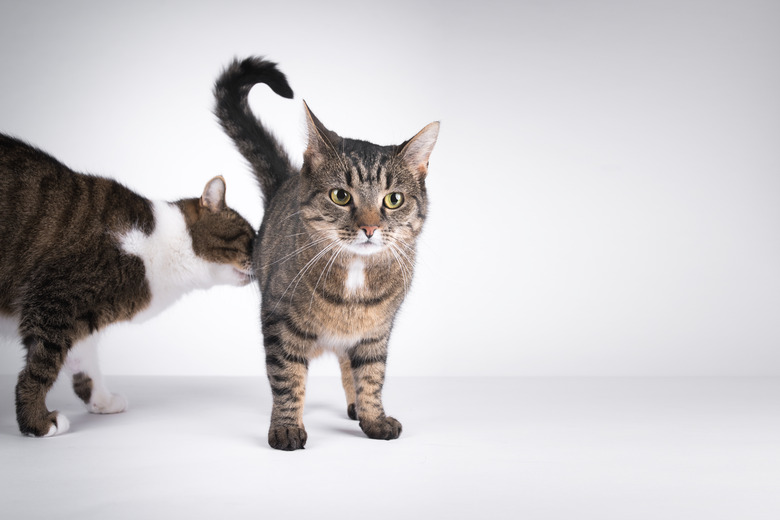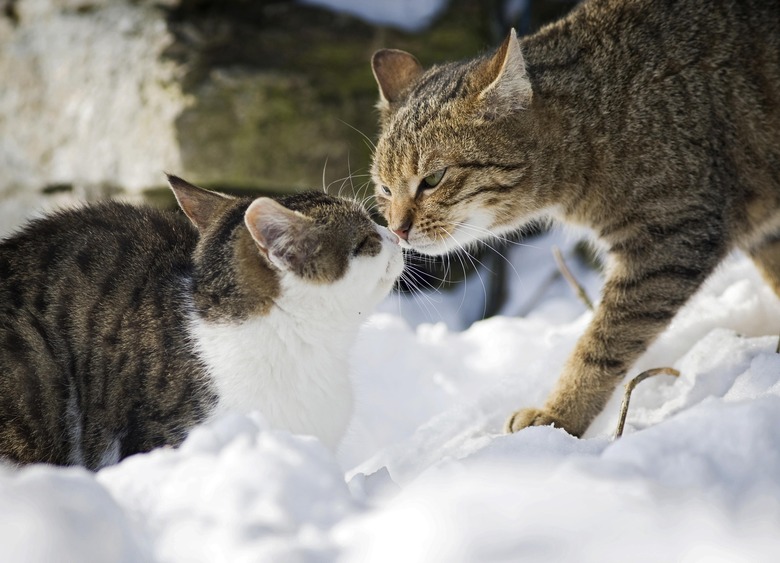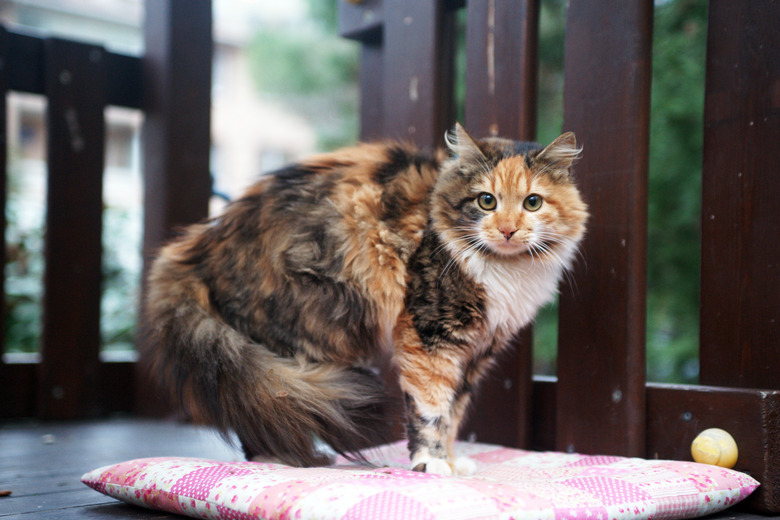Why Do Cats Sniff Each Other's Butts?
We see dogs do it all the time: two canines meet, perhaps touch noses or size each other up for a second before immediately rushing around to the back end of their new acquaintance to get a good sniff. Dogs sniff each other's butts for a good reason: to gather information about the other dog in front of them. Unlike people, who can use language to ask questions, dogs rely on their keen sense of smell to get a feel for the world around them. Cat owners may have noticed similar behaviors among their felines as well, but do they sniff each other's butts for the same reasons that dogs do?
Sense of smell
Sense of smell
Animals like dogs and cats rely on their senses of smell to understand their immediate environment by gathering information. For felines, many scents containing valuable info about another cat can be found directly in and on that cat, in areas like the forehead and the anus, explains VCA Hospitals. If you've ever seen two cats sniff each other's faces or bump heads, this is to release pheromones contained within their faces, which become released to emit animes and acids needed to communicate on a chemical level. This form of communication is unspoken, of course, but contains a wealth of information about the other cat, like the type of mood she may be in, or whether she is healthy or sick.
On the other end of your feline friend, the butt also provides a valuable resource for decoding particular traits of a cat when sniffed out by a cat's nose. Anal glands stored within a cat's rectum contains the same information, only more detailed and easily recognized, and can even be used to tell if two cats have met before. For this reason, cats will often make a beeline straight to the behind, almost as if to bypass any unnecessary small talk to get right to the pertinent information.
Other ways cats communicate with smell
Other ways cats communicate with smell
Cats are able to mark areas with their scent without requiring a nose in their nether regions to get the point across. This is done mostly by rubbing their bodies up against an object, like their human companions legs, or a fence post in their front yard, which transfers their pheromones and sends a message to other cats that this particular thing "belongs" to them. Additionally, felines use their bathroom functions to emit odors, according to the ASPCA. When a cat defecates, the same anal glands that a cat sniffs when they get a whiff of a fellow cat's butt releases a scented secretion each time they poop.
Urine is also used to send important messages to other cats outdoors. Cats use urine to mark territories outdoors, which can keep them safe from harm as they are solitary creatures and hunters. Using urine to communicate through scent can tell another cat when a feline has recently been in the area (which serves as a nice way of saying "keep out") and can also signify which cats are looking to mate.
Other feline communication
Other feline communication
While a sense of smell is an invaluable resource for a cat, they use other senses to communicate as well. In order to read each other's body language, cats will also use their sense of sight. Generally, the position of a cat's ears, tails, eyes, and overall bodily posture will serve as either a warning or an invite for other cats and people. Flattened ears can indicate fear, while a flat coat usually means that all is well and that your cat is relaxed. When cats attempt to appear larger than they are — by arching up their bodies, allowing their hair to stand on end, and meowing loudly — they are sending a signal to keep away, or else.


